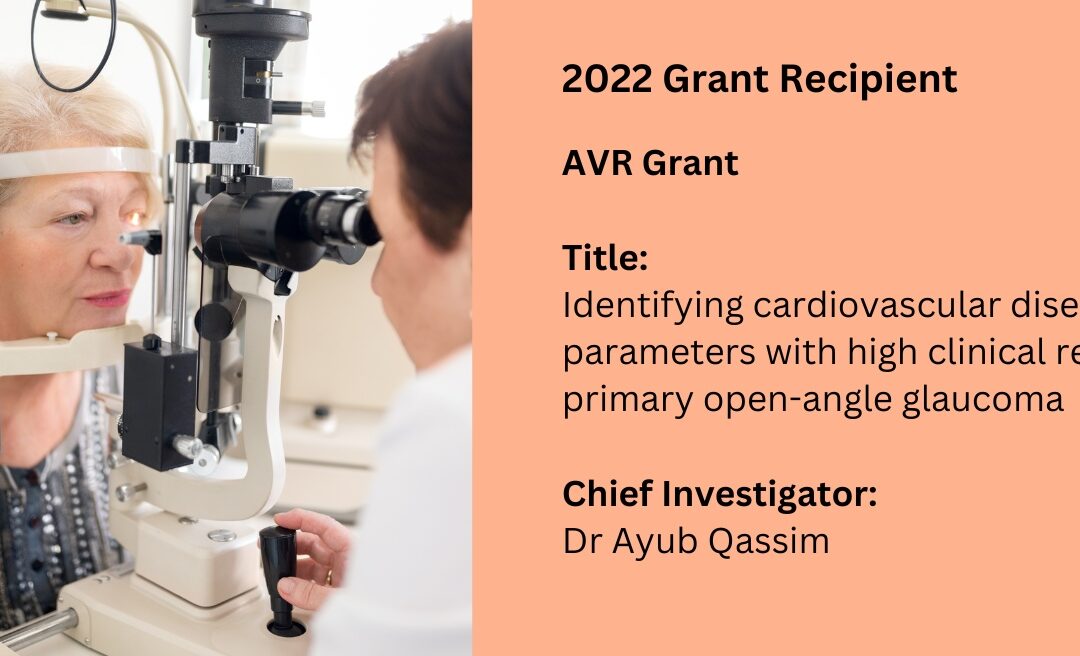Chief Investigator: Dr Ayub Qassim
Co-investigators: Dr Henry Marshall, Dr John Landers
Aim
To identify individual plasma lipid species, as well as ambulatory and nocturnal blood pressure markers relevant to POAG progression.
Methods
The relationship between 854 lipid species and longitudinal open angle glaucoma outcomes were
investigated. Metrics derived from ambulatory blood pressure measurements were compared
between glaucoma phenotypes: high-pressure, low-pressure and stable glaucoma patients.
Implications for Clinical Practice/Science and Future Research
Cardiovascular traits are modifiable risk factors for open angle glaucoma. The results of this study hope to enable better risk stratification and elucidate novel methods for treatment of this disease.
Knowing that hypertension and dyslipidemia are related to glaucoma progression will allow clinicians and patients to identify and treat these comorbidities for improved glaucoma management, particularly for those that continue to develop poor glaucoma disease despite conventional glaucoma treatments.
Preliminary findings from this project have directly inspired another project. Utilizing artificial intelligence (AI), cardiovascular risk from retinal images will be calculated and tested whether this
informs risk of glaucoma progression.
The results of this study also led to further publications that explored the relationship between
anthropometric risk factors and of exercise in this disease.
Lay summary of outcomes
This study evaluated the association between modifiable cardiovascular outcomes and open angle glaucoma. It provides preliminary data showing that lipid species may be predictive of disease progression, and that blood pressure metrics may enable better delineation of clinical features of open angle glaucoma.
Key Results
The serum concentration of 854 lipidomic species from 1300 participants were measured using Liquid Chromatography Mass Spectrometry. Forty-four of these species demonstrated associations with longitudinal outcomes for retinal nerve fiber layer thinning, fifteen of which were also associated with longitudinal rates of macular thinning. A multivariate lipidomic risk score derived from this analysis was then associated with rates of visual field loss in glaucoma.
Of 71 participants recruited, 52 successfully completed the full blood pressure protocol with
high- quality data. Preliminary analyses showed those with normal-pressure glaucoma
demonstrated higher day-time blood pressure readings, suggesting hypertension could contribute
to some patients developing worse glaucoma than others. Recruitment was limited by changes in
practice due to Covid-19, and network issues for safe online data storage.
Conclusion
The generous funding from this grant has provided preliminary data associating cardiovascular traits with open angle glaucoma outcomes and phenotypes.
This research was funded in 2022 by Australian Vision Research.

